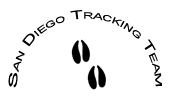History
In the late 1980s, the Friends of Los Peñasquitos Canyon Preserve formed a joint field team with the San Diego Biodiversity Project to map existing and potential wildlife corridors to the north. Developments to the east, west, and south precluded the possibility of fully functioning corridors in these directions. This field team developed a set of corridor maps which were presented to the Environmental Divisions of public agencies such as the City of San Diego and CalTrans and to community groups and landowner organizations. After review and refinement, the joint team organized a field trip with conservation biologist and wildlife habitat expert Professor Mike Soulé and biologists from many other agencies, who together, validated the wildlife corridor mapping. This mapping subsequently influenced the location of wildlife corridors in the Framework Plan for the Future Urbanizing Area of the City of San Diego, Neighborhoods 10 and 8A (in Carmel Valley) and other areas. Later, these corridors were included in the Multiple Species Conservation Program plan for the City and County of San Diego.
The founding of the Friend’s Tracking Team in 1993 led to important wildlife survey work in Los Peñasquitos Canyon Preserve, particularly around a wildlife tunnel that was constructed under Lopez Ridge as part of the residential development of this ridge. This work and related work on wildlife corridors east through Sabre Springs and west under the I-5/I-805 merge in Sorrento Valley have added valuable data to the study of what makes for successful wildlife tunnels and corridors.
Those who have had the pleasure of working with the SDTT have either met or heard about Barry Martin. The write-up below captures some of his contributions.
A Slice of SDTT History by Barry Martin
In 1988-90, I had begun volunteering at Peñasquitos Canyon Preserve, working in the volunteer patrol under Rangers Reneen Mowry (county) and Bill Lawrence (city). Since age 9, I had carried an interest in tracking and was blown away at the diversity of wildlife in evidence in this urban preserve. I began to share my observations with the rangers and soon we began planning a survey. After several months of wandering the preserve documenting tracks and sign, I realized that to do this properly, I would need help. Ranger Bill obtained funding for Peterson Field Guides to Animal Tracks and I wrote an article for the Friends of Los Peñasquitos Canyon Preserve Newsletter describing the project and seeking volunteers to come out on a Saturday morning to learn about tracking and surveying for tracks and sign.
That first session drew a lot more people than I expected. I had spent much of my spare time in the open spaces noticing and following tracks, but for those who hadn't, we learned that tracking was challenging. Ultimately a core group of people emerged from that initial gathering to become the Peñasquitos Preserve Tracking Team, the first tracking team in San Diego. Much trial and error ensued regarding field techniques and I sought to improve my own tracking skills. I attended the Tracker School in New Jersey going through their curriculum over the span of a few years in the 1990s. Lee Kirchevel, Rick Botta, Eric and Lani Noreki, and I then established a series of Tracker Naturalist classes. These classes included tracking and survival skills. To develop a more scientifically legitimate data collection, we adopted the Cybertracker Tracking evaluation system. We then dropped the survival skills component of our classes to focus on producing competent trackers capable of producing solid data.
In 1998, Ann Hunt and I began work to obtain 501(c)(3) designation of a new entity, the San Diego Tracking Team, initially intended to be a consortium of tracking teams throughout San Diego. We obtained the official paperwork in 2001 and a new chapter in the life of the tracking team concept was spawned. We had accumulated a very large data set. We received grants from the San Diego Foundation to commission studies of the data. During this time, Karen Larsen-Gordon became SDTT director as I became busier with other field commitments. I am very proud of the accomplishments and longevity of the SDTT and consider it "my baby." This organization has provided a model for how valid citizen science can be done for the purpose of helping to preserve and conserve connected open space as well as educate.
